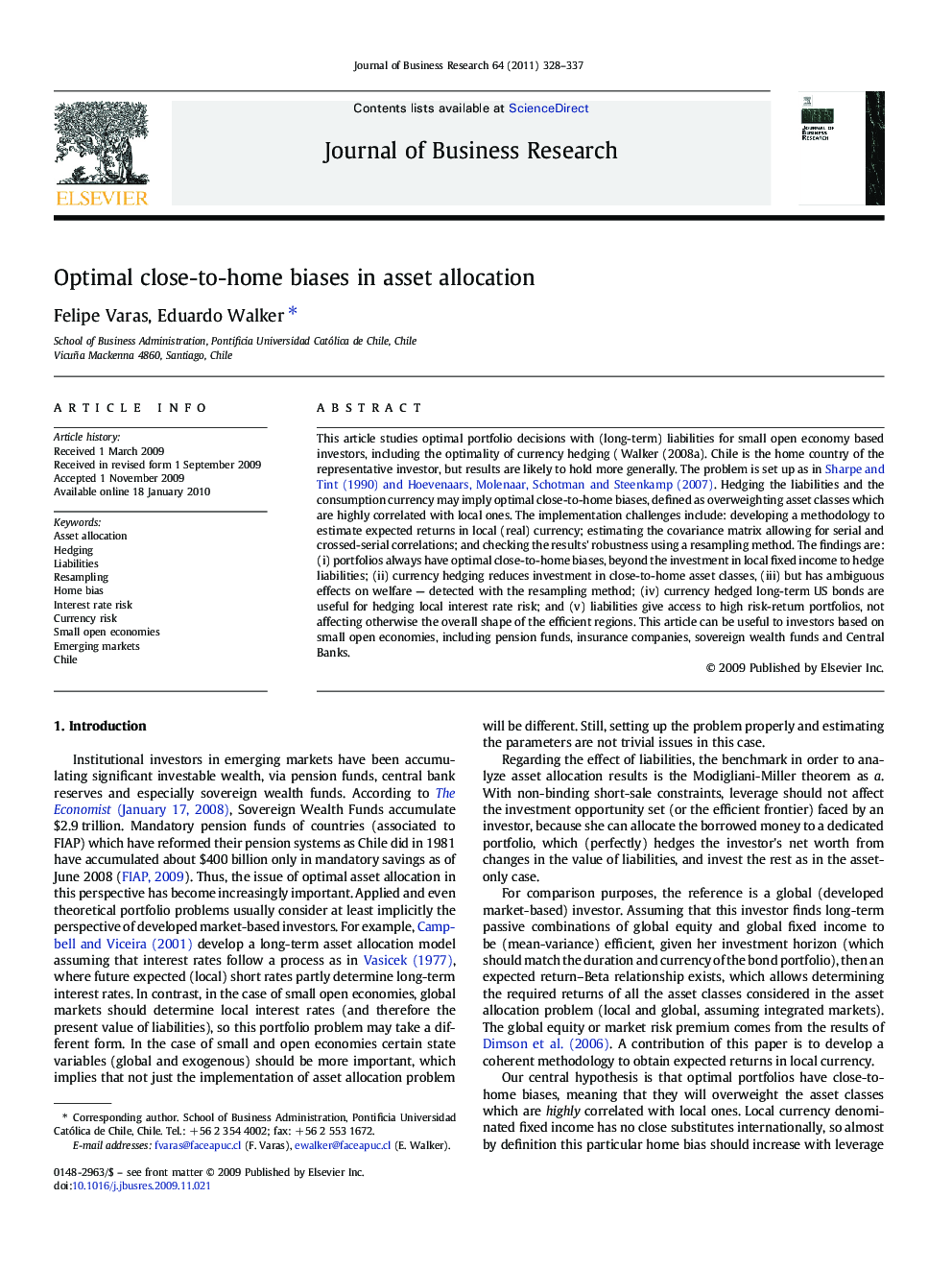| Article ID | Journal | Published Year | Pages | File Type |
|---|---|---|---|---|
| 1018573 | Journal of Business Research | 2011 | 10 Pages |
This article studies optimal portfolio decisions with (long-term) liabilities for small open economy based investors, including the optimality of currency hedging (Walker (2008a). Chile is the home country of the representative investor, but results are likely to hold more generally. The problem is set up as in Sharpe & Tint, 1990 and Hoevenaars et al., 2007. Hedging the liabilities and the consumption currency may imply optimal close-to-home biases, defined as overweighting asset classes which are highly correlated with local ones. The implementation challenges include: developing a methodology to estimate expected returns in local (real) currency; estimating the covariance matrix allowing for serial and crossed-serial correlations; and checking the results' robustness using a resampling method. The findings are: (i) portfolios always have optimal close-to-home biases, beyond the investment in local fixed income to hedge liabilities; (ii) currency hedging reduces investment in close-to-home asset classes, (iii) but has ambiguous effects on welfare — detected with the resampling method; (iv) currency hedged long-term US bonds are useful for hedging local interest rate risk; and (v) liabilities give access to high risk-return portfolios, not affecting otherwise the overall shape of the efficient regions. This article can be useful to investors based on small open economies, including pension funds, insurance companies, sovereign wealth funds and Central Banks.
